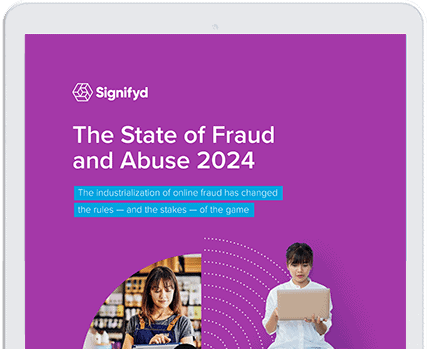In a world where everything happens in real time — instant streaming, rides and payments — why should refunds be any different?
That’s what today’s consumers are wondering.
As expectations for “instant everything” rise, shoppers are paying closer attention to the speed of refunds and the ease of returns before they even click “buy now.” In fact, research shows that 77% of consumers in Europe alone base their online shopping decisions on each merchant’s return policies.
This importance of refund speed directly ties into a retailer’s ability to build loyalty and increase customer lifetime value (CLTV). As a result, instant refunds are becoming a strategic move in the returns game.
Why today’s consumers expect faster refunds
Shoppers’ expectations have been shaped by industry giants, leading to the “Amazon effect”: desires for ultra-fast shipping, no-questions-asked returns and instant refunds. This has set the standard for all ecommerce merchants, with 63% of American consumers now expecting same-day refunds.
Shoppers around the world view slow refunds as an unacceptable delay in the buying process. A prolonged wait for a refund can create a pause in the buying cycle. Customers may hold off on new purchases until their refund is processed or, worse, decide not to buy from the merchant again at all.
The impact of delayed refunds
A 2023 study found that over half of UK-based consumers are less likely to repurchase from a merchant after a slow refund process.
Delayed refunds damage trust and frustrated customers are more likely to churn. The impact is direct: lost revenue, lower CLTV and an increased likelihood of customers shopping with competitors. After all, if one ecommerce retailer refunds a customer in two days when another makes them wait two weeks, it’s not hard to guess who they’ll shop with next time.
There are also operational costs to slow refunds. Delays (and a lack of clarity around them) lead to more customer service tickets as shoppers chase their refunds. Every return sitting in a customer service agent’s queue is an unresolved transaction, and the longer the returns process takes, the less likely the item can be resold at full price, even if it’s returned undamaged.
This is where instant refunds can make a significant difference.
What are instant refunds?
Instant refunds is a process whereby a merchant approves the refund immediately when a customer initiates a return (like when the request is logged or the return shipping label is scanned by the carrier). That allows the return process to begin instantly, meaning the procedures the bank and credit card company use to credit the customer’s account start right away.
Instant refunds significantly reduce the waiting period that often frustrates customers. By alleviating this headache, merchants enhance customer trust in their brand, setting the necessary foundation for a higher CLTV.
How instant refunds improve CLTV in ecommerce
For merchants, offering instant refunds can enhance the post-purchase experience and boost CLTV in several ways.
1. Builds customer trust and brand loyalty
Offering fast refunds creates a strong sense of security for customers. When shoppers know they can easily and quickly get their money back if a purchase doesn’t work out, it builds trust in the brand. This trust is crucial for fostering loyalty and encouraging repeat purchases.
2. Elevates the customer experience
Convenience is a major factor in customer satisfaction. The faster a refund is processed, the smoother the overall customer experience becomes. This turns a potentially negative interaction into a positive one that can enhance their perception of the brand. By issuing refunds quickly, merchants can turn what might seem like a failure (returning a product) into a success, reinforcing their commitment to delivering excellent customer service.
3. Lowers cart abandonment rates
A smooth, straightforward return and refund process can directly reduce doubts at the checkout stage. Online shoppers are often hesitant to make a purchase if they’re unsure about the returns process, especially if it’s not clearly communicated somewhere.
When a merchant provides a transparent, hassle-free return and refund policy, it helps consumers feel more confident about completing the purchase. This ultimately leads to higher conversion rates, as customers are more willing to follow through with their transactions.
4. Increases average order values
A frictionless return and refund process acts as a “safety net” for customers, knowing that if the product doesn’t meet their expectations, they can easily return it. This peace of mind encourages them to spend more — in fact, according to Signifyd’s 2025 State of Commerce Report, 62% of consumers say they’ll buy more from a merchant when they’ve had a positive returns experience with them, leading to a higher CLTV over time. Not only that, but customers who receive instant returns have a 23% higher repurchase rate within the following 30 days. A higher repurchase rate is the key variable that boosts customer lifetime value.
5. Reduces customer service team costs
By reducing the wait time for refunds to appear in customer accounts, instant refunds reduce the number of customers contacting a merchant’s call center to ask or complain about their refunds. Reducing call center costs also reduces the cost to retain the customer, boosting the value of that satisfied customer.
6. Promotes a stronger market advantage
Consumers prioritize convenience and speed, and merchants who meet these expectations differentiate themselves from the competition. By offering instant refunds, retailers can appeal to new buyers who value a seamless, efficient returns process, setting themselves apart from competitors with more restrictive or slower policies.
Challenges of instant refunds
While instant refunds have clear benefits, the risk of costly online fraud is a significant concern for merchants. It’s estimated that ecommerce merchants lost $46 billion to fraudulent returns in 2024.
Return fraud scams (customers sending back an empty box or returning a counterfeit instead of the original product) are a risk when refunds are issued before the product is received. Merchants also worry that offering instant refunds could encourage a culture of returns. If ill-intentioned customers know they’ll get their money back instantly, it may lead to increased returns or wardrobing — buying items to use once and then return.
Instant refunds requires the tools to spot the growing number of fraudulent returns requests
Signifyd Senior Director, Chargebacks and Abuse Recoveries Tara Mitchell has seen the growth in refund fraud both from a merchant’s perspective and from the prespective of a fraud analyst. The challenge is growing, but technological solutions exist to tackle the problem.
Merchants must also carefully balance trust and eligibility considerations as not all returns should be processed instantly. A low-risk return, like a T-shirt from a repeat customer, may be refunded immediately. However, high-risk returns, like multiple premium tablets from a new customer, should require additional verification, resulting in a delayed refund until the return’s legitimacy is confirmed.
Of course, a merchant that decides to approve a refund at any point before inspecting the returned product faces risk at each step of the returns process — whether or not they’ve decided to provide instant refunds.
While an instant refund is often initiated when the return is scanned by a carrier, a merchant might choose to approve a return once the package is received at the warehouse. Or a merchant might approve a refund after a given amount of time passes from when the package arrives at the warehouse — whether the returned item has been inspected or not.
These are all understandable concerns for retailers. Fortunately, artificial intelligence (AI) tools can help resolve them.
How AI helps address instant refund concerns
Modern technology is making it much easier to offer instant refunds safely, and AI is proving to be a strong ally in distinguishing legitimate refund requests from fraudulent ones. By leveraging AI capabilities within solutions like Signifyd’s Commerce Protection Platform, merchants can embrace the upside of instant refunds (happier customers, greater loyalty) while keeping the downside (fraud, losses) in check.
Fraud detection and prevention
By continuously pulling and analyzing data from a network of merchants, AI models:
- Detect suspicious patterns
- Flag potentially fraudulent return requests in real time
- Give merchants a clearer picture of who is requesting the refund and why
These models can also identify high-risk transactions before an instant refund is issued by evaluating factors like product type, transaction amount, purchase frequency, transaction history and return habits.
Return policy abuse prevention
Before issuing a refund, AI can proactively identify and alert merchants to subtle patterns that suggest abuse. These could be things like unusually high frequency of returns for a specific product, or the telltale signs of wardrobing, where items are purchased, used briefly and then returned.
Customer segmentation and personalization
Merchants can also leverage AI to instantly understand the identity and intent behind each return request. In doing so, a merchant can create personalized returns experiences based on the level of risk a given refund presents. For instance, a request accompanied by a set of circumstances indicating a loyal customer with a positive history would receive an instant refund while a refund request arriving with troublesome signals may be subject to more rigorous return conditions..
By adjusting refund policies based on transaction, historic and behavioral data, merchants can offer instant refunds where it will do the most good and pose the least risk.
Embracing instant refunds to support long-term growth
As consumers’ need for speed grows, faster refunds are becoming a non-negotiable factor in their purchasing decisions. By implementing an instant refund process, ecommerce merchants can drive loyalty, enhance the customer experience and increase CLTV — all of which are key for long-term revenue growth.
To learn more about how instant refunds and other ecommerce trends can boost your bottom line, check out Signifyd’s 2025 State of Commerce Report. Whether you’re looking to optimize your returns and refund process, reduce fraud risks or improve customer experience, this report will give you the actionable insights you need to support success at every touchpoint, from pre- to post-purchase.
Photo by Getty Images
Want to provide instant refunds for your customers? Let’s talk.








